Single Knee to Chest is often prescribed in physical therapy and frequently practiced in yoga class. This posture is easy to do at the end of the day, even laying in bed, or first thing when you wake up in the morning.
Create the physical shape of Single Knee to Chest
Here are instructions on how to achieve the physical shape of Single Knee to Chest:
- Lay on your back with your legs straight and arms by your side.
- Inhale.
- Exhale, and bring your right knee to your chest.
- Lengthen your right leg towards your chest, holding behind your right knee.
- Inhale and exhale for a few breath cycles, or inhale bringing your right knee towards your right shoulder. Exhale, bringing your right knee back to midline.
- Repeat on your other side.
Make Single Knee to Chest Work for you
The beauty of a yoga practice is its flexibility (no pun intended!). That is, you can make adjustments to the positioning and use props. Try some of the variations below and make it work for you!
Does it hurt your back?
If Single Knee to Chest hurts your back, see if bending your opposite knee eases it. For example, bring your right knee to your chest, bend your left knee, and place your left foot on the ground.
I can’t reach my leg without my head coming off the ground!
Loop a yoga strap or towel behind your thigh. This will allow you to soften in the posture more if you are not straining to hold your leg.
Hold for a few breaths
Enjoying the stretch? Relax with your knee to your chest or out to the side for a few breaths.
Use pelvic floor imagery
As you bring your knee out towards your shoulder, inhale and visualize your inner thigh and pelvic floor lengthening. You can imagine your sitz bones spread apart and tailbone lengthens towards the floor.
Make circles with your knees
Hold on top of your knee cap. Slowly circle your knee clockwise and counter-clockwise to nourish your hip joint.
Make it a double
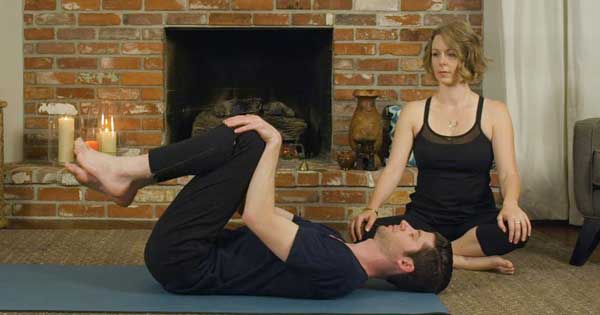
Bring both knees into your chest, holding either behind your knees or on top of your knee caps. Feel your sacrum, back, and shoulder blades softening into the floor. Rest here for 5-10 breaths.
Twist it out
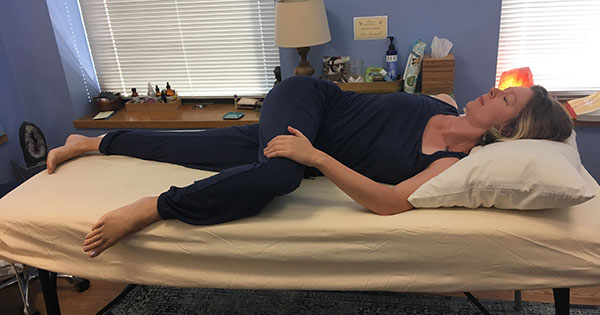
In Knee Down Twist, you lay on your back with your left leg straight. Your right knee bends up towards your chest and crosses over midline. You can hold your right knee with your left hand and open your right arm out to the side, palm facing the ceiling.
Knee Down Twist can feel amazing for some people and sometimes be too intense on the sacroiliac joint. The sacroiliac joint is the place at the base of the spine joint where the spine attaches to the pelvic bones. Supine Twist gives you similar benefits of Knee Down Twist but without putting too much torque on the sacroiliac joint.
Make it restorative
Transform Single Knee to Chest into a restorative posture.
- Lay on your left side.
- Place a bolster in front of your left leg lengthwise.
- Rest with your right thigh on the bolster.
You might enjoy supporting your neck with a blanket or pillow under your head.
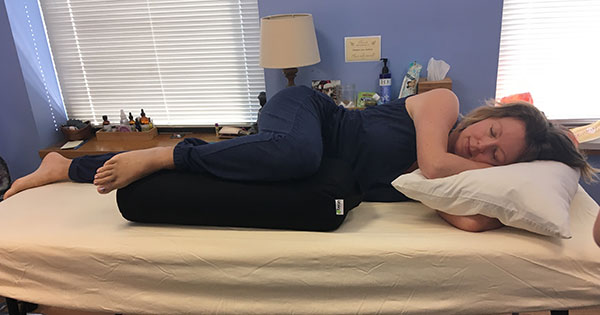
Why should you choose Single Knee to Chest?
Flexibility
Single Knee to Chest increases flexibility of your back and hips.
Downregulation
Single Knee to Chest offers physiological quieting.
Taking a pause in this posture, especially when paired with paced breathing or the dirgha (3 part) breath, calms the sympathetic nervous system.
Downregulation of the fight or flight system helps manage persistent pain and day to day stress.
Digestive support
For men and women with gastrointestinal issues, this can be a helpful posture for releasing gas.
Starting with your right knee to chest (compressing the tissue above the ascending colon) and ending with your left (above the descending colon) might be helpful in aiding the digestive process.
Who is this posture good for?
This posture is particularly for helping manage constipation, overactive bladder, interstitial cystitis/painful bladder syndrome, and low back pain.
Additionally, most adults need more opportunities to move in a variety of ways as we are often stuck in prolonged sitting postures during the day.
I hope you find this post hopeful and you are inspired to move more mindfully!

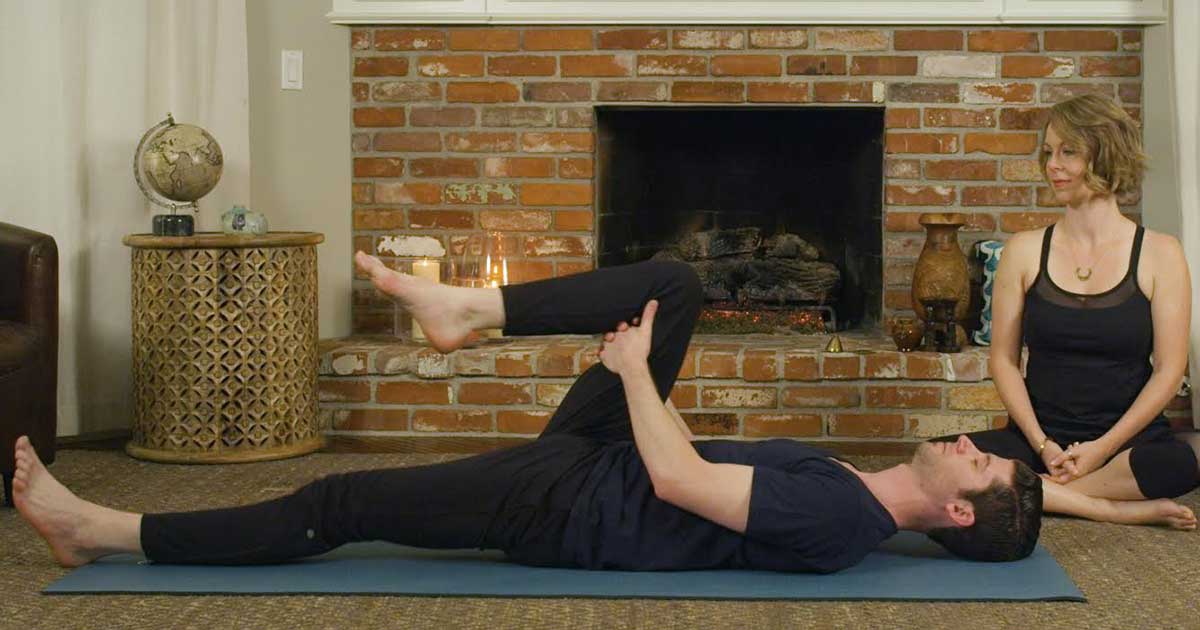
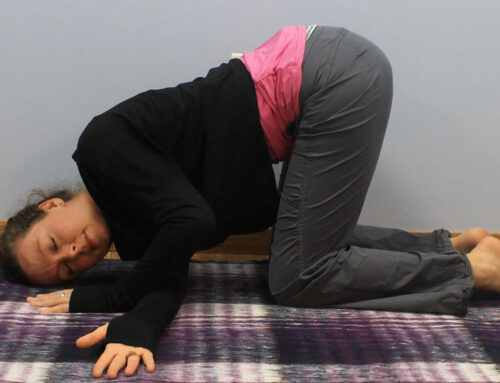
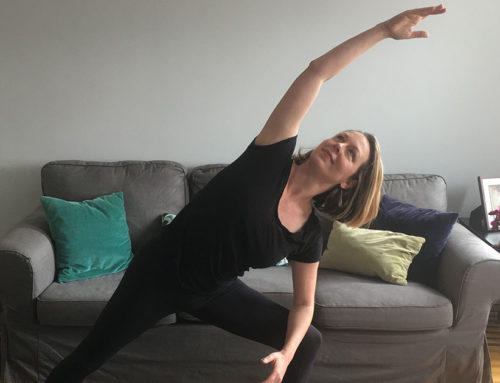
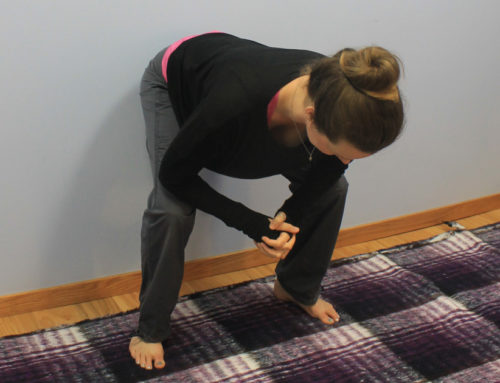
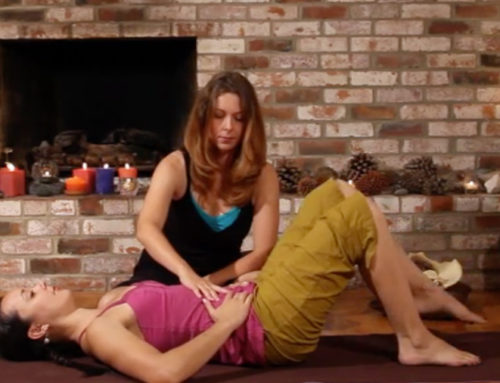
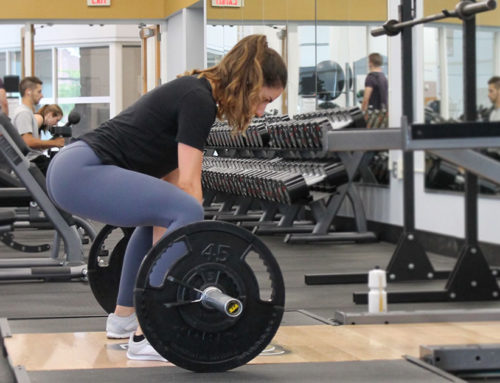
Leave A Comment